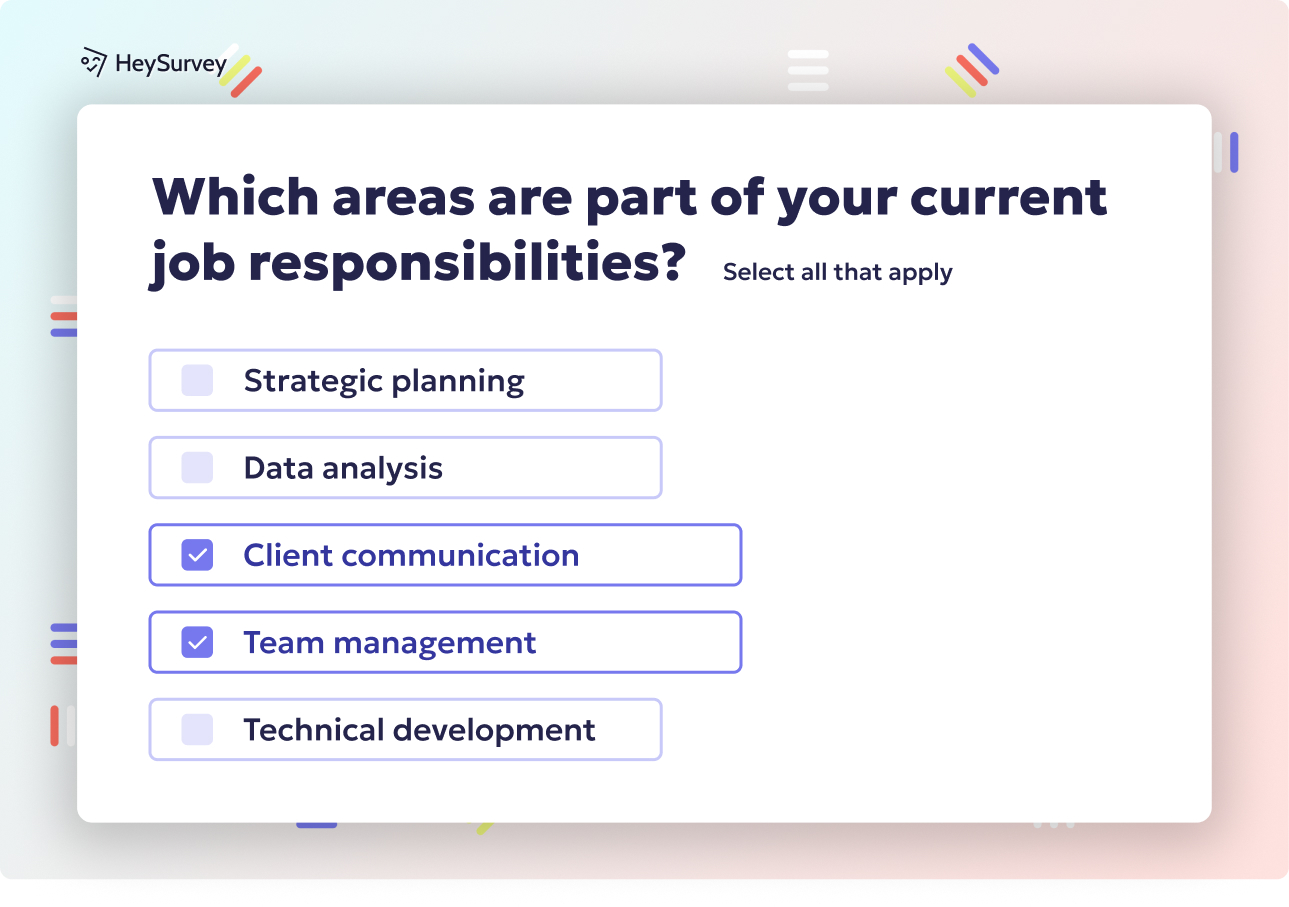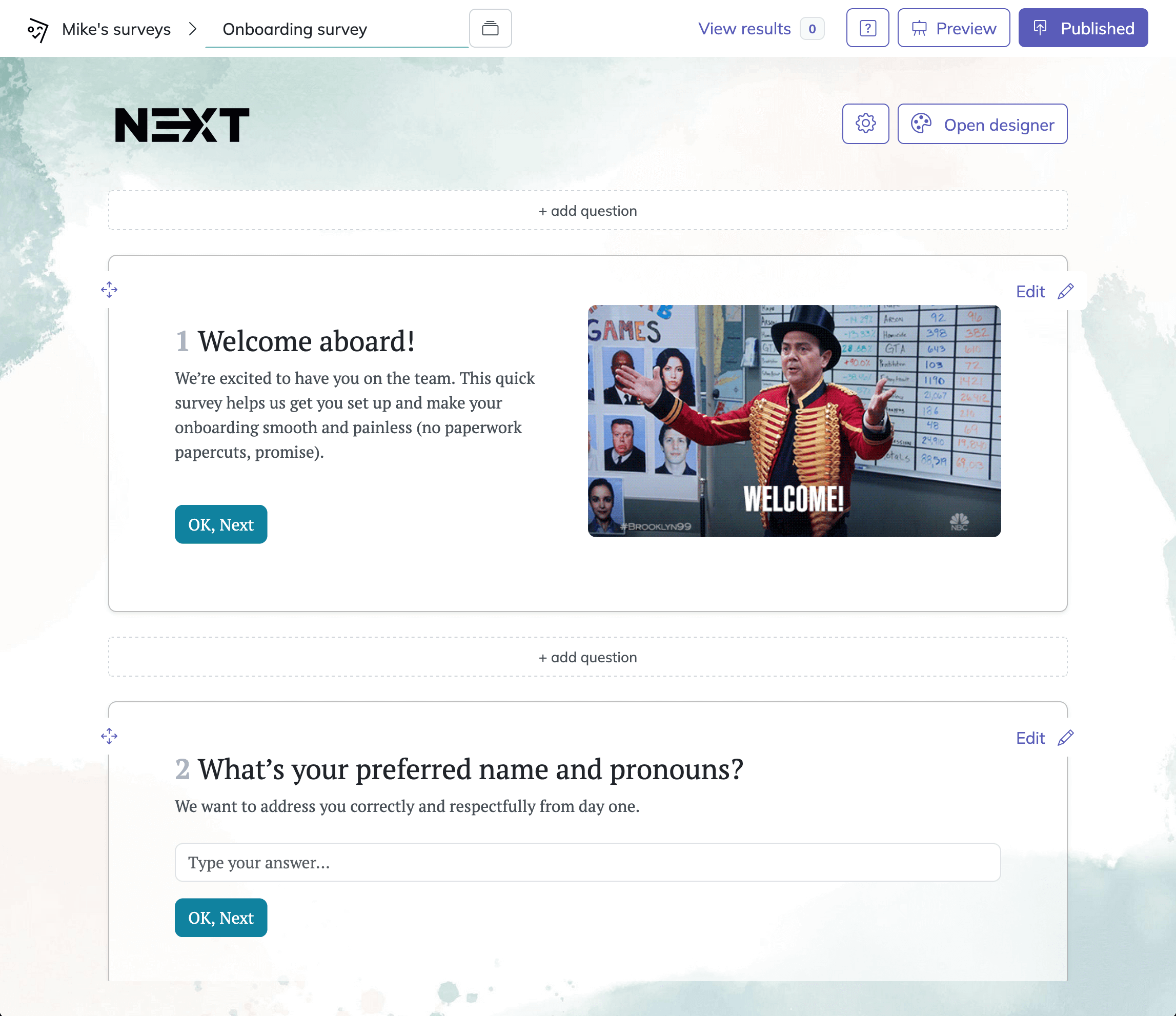31 Concept Testing Survey Questions: Types, Templates & Uses
Explore 30 proven concept testing survey questions covering visuals, features, pricing, naming, and messaging to boost product success.
Pre-launch jitters? Every creator, marketer, and product manager has felt the uncertainty of sending a new idea into the world. That’s where concept validation comes in. With the right concept testing survey questions, you can turn gut feelings into actionable insights—whether for a product, feature, packaging, or campaign. By gathering feedback during new product research, you’ll reduce launch risk, sharpen positioning, focus R&D, and move faster to market fit. Run a concept test at four key moments: the ideation spark, the prototype demo, pre-launch pressure checks, and even post-launch for fine-tuning. Ready to make idea screening your secret weapon? Let’s dive in.
Visual Concept Evaluation Surveys
What Are Visual Concept Evaluation Surveys?
Visual concept evaluation surveys are the secret ingredient when you need to test creative mock-ups before betting the farm on production. These surveys measure the first impressions, appeal, and clarity of static images, ad storyboards, or even product renderings. If you’ve ever wondered how people feel about that beautiful hero image or bold campaign visual, this is your shortcut to clarity.
With visual ad testing, you get numeric ratings and open-ended feedback to separate what wows from what flops. You might be testing different versions of social media ads, packaging options, or landing page hero strips. Each version can be put side by side, and—crucially—respondents won’t spare your feelings. That brutal honesty is gold.
Visual concept surveys help you:
- Spot creative darlings that make instant sense
- Weed out anything that’s confusing, off-brand, or simply boring
- Get a read on emotional reactions before a single media dollar is spent
Why & When to Use Visual Concept Evaluation Surveys
You should always run visual evaluation surveys early in the creative process. Don’t wait until you’ve burned budget on glossy final assets. Testing rough sketches or even simple wireframes is enough to catch red flags. With these surveys, you’ll:
- Compare several visuals and find the strongest candidate
- Ensure your top pick resonates—before it ends up in a billboard or big ad spend
- Optimize versions based on what actually grabs attention
So, that mouthwatering product shot? Test it before you order a thousand prints. The clever animated ad? See if your target audience gets it, or if it leaves them scratching their heads. There’s no better way to build confidence in your creative choices.
5 Sample Visual Concept Evaluation Questions
What is the first word or feeling that comes to mind when you see this image?
On a scale of 1–7, how visually appealing is this concept?
How clearly does the image communicate the product’s main benefit?
Which of the following visuals would make you most likely to learn more?
What, if anything, feels confusing or out of place in this design?
Incorporating visuals into surveys can double information retention compared to text-only formats. (kantar.com)
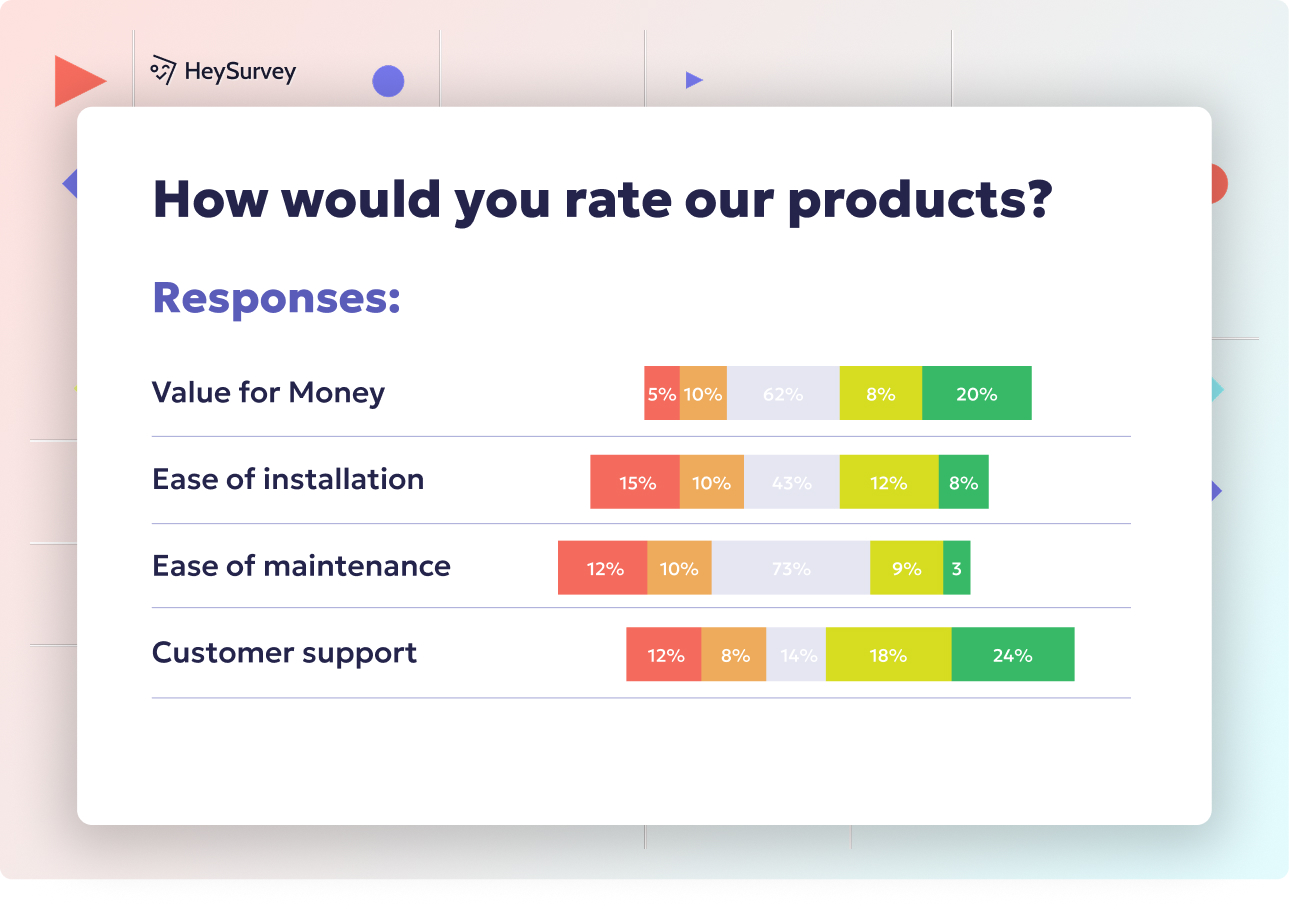
How to Create Your Concept Testing Survey with HeySurvey in 3 Easy Steps
Ready to get your survey off the ground? HeySurvey makes it simple—even if you’ve never built a survey before. Follow these three quick steps, and you’ll have a concept test ready to collect real feedback faster than you can say “market fit”!
Step 1: Create a New Survey
- Head over to HeySurvey and click Create New Survey.
- Pick how you want to start: choose an empty sheet to build from scratch, or select a pre-built template tailored for your concept test.
- Name your survey with something snappy (like “Visual Ad Test” or “Feature Prioritization”).
- The Survey Editor will open up, giving you a clear workspace where you’ll add and tweak your questions.
Step 2: Add Your Concept Testing Questions
- Click on Add Question at the top or between existing ones.
- Choose the question type that fits each concept test need—single-choice, scale, text input, or dropdown are all available.
- Enter your question text, for instance, “Please rank these features from most to least important to you,” and add descriptions if needed.
- Don’t forget to mark important questions as required, so respondents answer the key parts before moving on.
- Use images if your concept needs visuals—upload your creative mock-ups or product shots right into the question cards for instant context.
- Repeat to build your full survey, mixing question types and branching paths if you want personalized flows.
Step 3: Publish and Share Your Survey
- Smash that Publish button when your survey is ready.
- You’ll get a shareable link you can send to your target audience or embed into your website.
- Note: HeySurvey requires an account to publish, so create a free one if you haven’t already.
- Watch responses roll in and start analyzing results in HeySurvey’s easy-to-read dashboards.
Bonus Steps to Level-Up Your Survey
Apply Your Branding
- Open the Designer Sidebar to upload your logo and customize survey colors, fonts, and backgrounds.
- Keep your survey looking sharp and aligned with your product’s personality.
Define Your Survey Settings
- Use the Settings Panel to set start and end dates for your survey’s life.
- Limit the number of responses if you want just a quick snapshot.
- Add a redirect URL to send respondents to a landing page or thank-you note after they finish.
Skip into Branches (Advanced!)
- Customize the survey flow based on responses. For example, if a respondent dislikes a feature, skip them past related questions.
- Add multiple endings with tailored messages or images to leave a lasting impression.
Starting is even easier: just hit the button below to open a pre-made template packed with sample concept testing questions and follow these steps to personalize it for your project. Your insights await!
Feature-Prioritization Concept Surveys
What Are Feature-Prioritization Concept Surveys?
Product features pile up quickly. Feature-prioritization surveys are your backstage pass to see which bells and whistles matter to real users. With a feature matrix survey, you ask audiences to rank or rate proposed features and uncover the must-haves versus nice-to-haves. No more guessing—product attribute priority becomes user-driven.
These surveys save teams from endless debate and help allocate resources where they’ll really move the needle. Want to avoid the “kitchen sink” effect or focus your MVP on what matters most? Start with a strong feature-prioritization concept survey.
Expect to use these surveys for:
- Trimming the product backlog to only high-impact features
- Prioritizing what goes into your next development sprint
- Understanding which proposed perks are worth the investment
Why & When to Use Feature-Prioritization Concept Surveys
It’s tempting to assume you know what users value, but even experienced teams get blindsided. The time to run a feature matrix survey is before hard development work begins. Especially when:
- Your product roadmap is crowded and budgets are tight
- You’ve listed more features than you could ever launch at once
- You’re about to define your MVP or finalize release priorities
With this approach, you’ll focus on features that actually help achieve market fit. You also gain backup when product debates get heated—just point to the data.
5 Sample Feature-Prioritization Survey Questions
Please rank these features from most to least important to you.
Which single feature would make you purchase sooner?
If we removed Feature X, how disappointed would you be?
How often do you expect to use Feature Y?
What additional functionality do you feel is missing?
Combining qualitative user interviews with quantitative Kano model surveys enhances feature prioritization by providing both in-depth insights and measurable data. (medium.com)
Naming & Tagline Concept Surveys
What Are Naming & Tagline Concept Surveys?
There’s nothing quite like that “aha!” moment when a perfect brand name or tagline clicks—but getting it wrong can haunt your product forever. Brand name testing and tagline research ask real targets to judge names or slogans for memorability, clarity, and edge. Great names get recognized, shared, and—most importantly—trusted.
Brand names and taglines are more than just clever words:
- They must fit the category
- Be easy to say and recall
- Avoid accidental negative meanings in other languages
The best way to avoid embarrassing missteps? A concept survey with a purpose-built question set.
Why & When to Use Naming & Tagline Concept Surveys
Use naming and tagline surveys when the stakes are high:
- Before finalizing a name or launching a creative presentation to leadership
- Ahead of a trademark search or legal clearance
- When entering new geographies and want to steer clear of cultural or linguistic blunders
Don’t let the “pet project” of a founder or marketer drive big decisions. Crowdsource reactions and pick winning names with collective confidence.
5 Sample Naming & Tagline Survey Questions
Which of these names best reflects the product’s purpose?
How easy is this name to pronounce?
What do you think this tagline means?
On a scale of 1–5, how memorable is Name A?
What, if anything, do you dislike about Tagline B?
Messaging & Positioning Concept Surveys
What Are Messaging & Positioning Concept Surveys?
Ever agonized over a value proposition or sweated over whether your benefit statement truly resonates? That’s where a message resonance survey becomes your marketing BFF. These surveys test draft taglines, elevator pitches, core value props—and quickly tell you what rings true with target buyers.
With messaging concept surveys, your aim is to:
- Spot statements that highlight real customer pain
- Select phrasing that gets you remembered, not ignored
- Uncover objections before pitching in the wild
Real feedback on value proposition testing is invaluable for shaping websites, email campaigns, and sales pitching.
Why & When to Use Messaging & Positioning Concept Surveys
You’ll get the most from positioning concept surveys right after you define your Ideal Customer Profile (ICP), but before launching campaigns. This lets you road test ideas with the right audience:
- Refine landing page copy or high-stakes ads
- Pick a winning email subject line
- Ensure your message makes prospects feel “this is for me”
Test, tweak, repeat—it’s the best way to guarantee strong, consistent messaging.
5 Sample Messaging & Positioning Survey Questions
Which statement best describes what problem this product solves?
How compelling is this benefit statement?
Which of these three messages makes you feel the product is for you?
What objections does this positioning leave unanswered?
How likely are you to click on an ad using Message C?
Effective messaging and positioning surveys utilize a mix of open-ended, multiple-choice, and rating scale questions to gain comprehensive insights into brand perception. (sightx.io)
Price-Sensitivity Concept Surveys
What Are Price-Sensitivity Concept Surveys?
Pricing can make or break your offering. Price-sensitivity surveys, such as the famous Van Westendorp or Gabor-Granger tests, help you zero in on what customers will pay—and what feels like too much. By probing perceived price elasticity, you not only spot your sweet spot but also learn what pricing says about quality.
Typical pricing research survey tactics:
- Show price ladders and see where excitement turns to hesitation
- Ask when deals feel suspiciously cheap
- Benchmark against competitors and alternatives
With data from price-sensitivity surveys, you move from guesswork to science.
Why & When to Use Price-Sensitivity Concept Surveys
Before you print price tags, make sure they’re right for your audience. Price-sensitivity concept surveys are best run:
- As you define MSRP or set new subscription tiers
- When expanding into markets with very different purchasing power
- To test reactions to discounts, bundles, or premium splits
This is how you prevent sticker-shock disappointment—or accidentally giving your innovation away for peanuts.
5 Sample Price-Sensitivity Survey Questions
At what price would this product start to seem too inexpensive to be high quality?
At what price would it be a good deal?
At what price would it start to feel expensive but still worth considering?
At what price would it be too expensive to consider?
Which price point offers the best value for money in your opinion?
Packaging & Design Concept Surveys
What Are Packaging & Design Concept Surveys?
That eye-grabbing shelf appeal you crave? It’s more science than art, and package design testing tells you who’ll notice – or skip – your product in the wild. These surveys provide direct label feedback on clarity, aesthetics, and emotional punch. You can tease out what makes a design scream “pick me!” or fade into the background.
Look for answers to:
- Which design stands out
- What key info shoppers want but don’t see
- Whether your colors and shapes match the emotional brand
No designer’s intuition can replace the cold, hard data from a label feedback survey.
Why & When to Use Packaging & Design Concept Surveys
Don’t wait until the printer is whirring! The ideal time to leverage package design testing is:
- Before finalizing dielines or producing at scale
- When considering a rebrand to clear up consumer confusion
- As you move into retail channels with different visual requirements
By integrating feedback early, you can increase shelf visibility, boost premium perception, and remove roadblocks to purchase.
5 Sample Packaging & Design Survey Questions
How noticeable is this package on a shelf of similar products?
What information is missing from the label?
Which design makes the product look premium?
How likely are you to pick this package up for a closer look?
What feelings does this color scheme evoke?
Prototype / UX Concept Testing Surveys
What Are Prototype / UX Concept Testing Surveys?
Great product ideas can die on the drawing board if usability is overlooked. UX concept tests blend clickable prototypes with follow-up prototype feedback surveys to validate if your flow is intuitive and delightful. Think of it as your pre-launch insurance policy: catching friction, confusion, or unmet needs before a single line of code goes live.
Instead of endless internal debates, use real world testers to measure:
- Task completion rates
- First impressions of navigation, labels, or actions
- Areas that spark anxiety, confusion, or delight
When UX passes a test drive, development is smoother and releases are less likely to stall.
Why & When to Use Prototype / UX Concept Testing
Test your product’s core flows as soon as you have wireframes or interactive mockups ready. The “perfect” design may not be so perfect in practice. Use this feedback:
- To benchmark completion rates, NPS, or SUS for new features
- To prevent costly dev rework or post-launch troubleshooting
- While iterating rapidly pre-launch
Quick, early feedback pays off with loyal users and fewer embarrassing launches.
5 Sample Prototype / UX Concept Testing Survey Questions
How easy was it to complete the checkout flow?
Which screen, if any, felt confusing or unnecessary?
How confident are you that this app would meet your needs?
What feature would make the experience significantly better?
Rate your overall satisfaction with the prototype on a scale of 1–10.
Best Practices: Dos & Don’ts for High-Impact Concept Testing
Dos
- Randomize concepts to prevent order bias
- Keep surveys under 10 minutes to avoid fatigue
- Segment results by persona for sharper insight
- Iterate quickly with feedback—timing is everything
- Include both closed and open-ended questions for richer data
- Visualize results for easy team alignment
Don’ts
- Test too many concepts at once—respondents lose focus
- Lead respondents with hints or phrasing that affects answers
- Ignore open-ended feedback—the juiciest insights are often in the comments
- Rely solely on vanity metrics like top-2 box or NPS without deeper analysis
- Neglect to thank participants—engaged testers deliver better data
Ready to create your own concept validation survey? Borrow these sample questions and templates to move from guesswork to growth, and let real-world feedback shape your next winning launch.
Related Market Survey Surveys
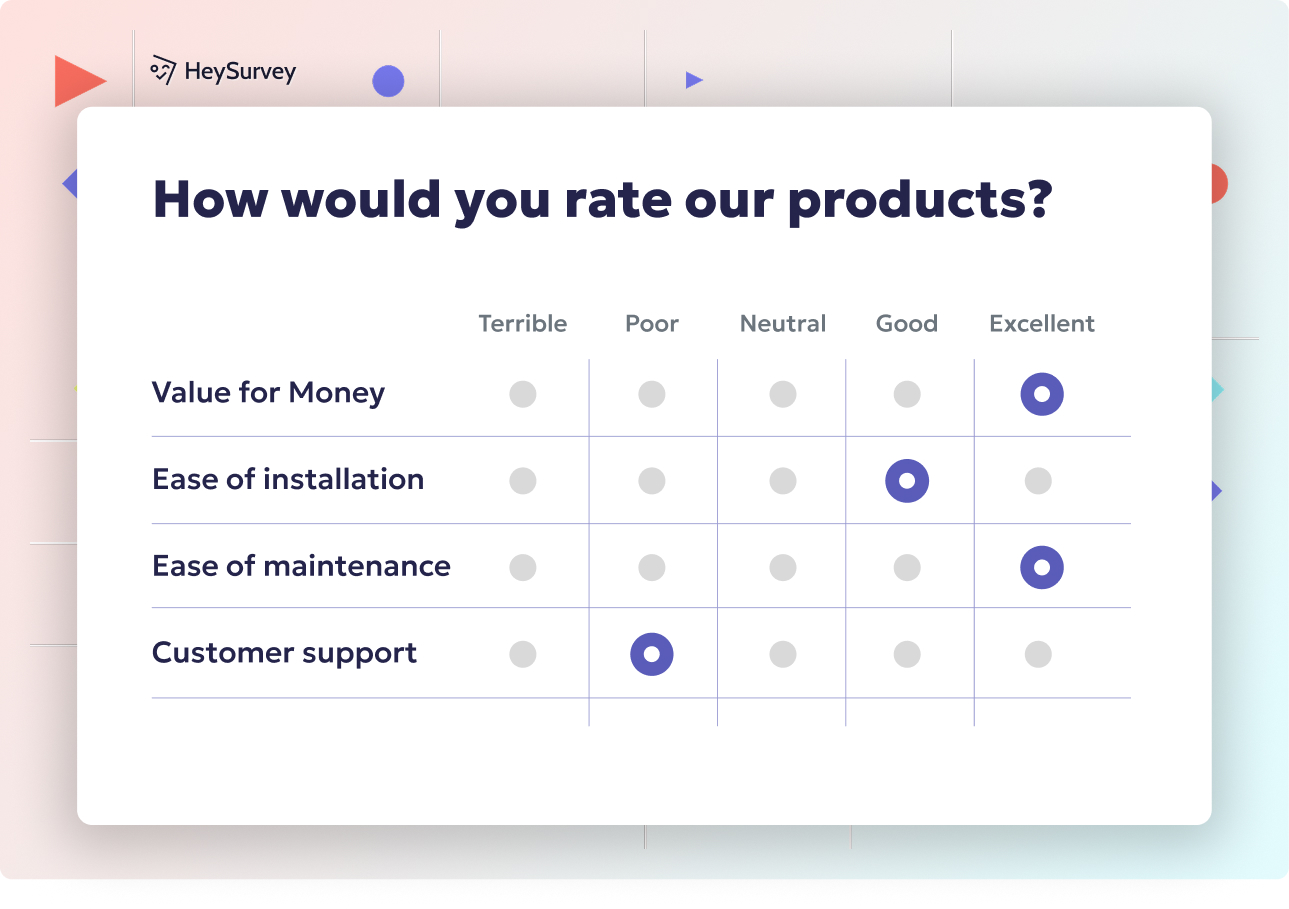
32 Market Research Survey Questions: Types, Samples & Tips
Explore 30+ market research survey questions with examples across types like CSAT, concept testin...

30 Coffee Survey Questions: The Complete Guide for Cafés & Brands
Discover 25+ expert coffee survey questions to boost cafés, product development, and brand insigh...
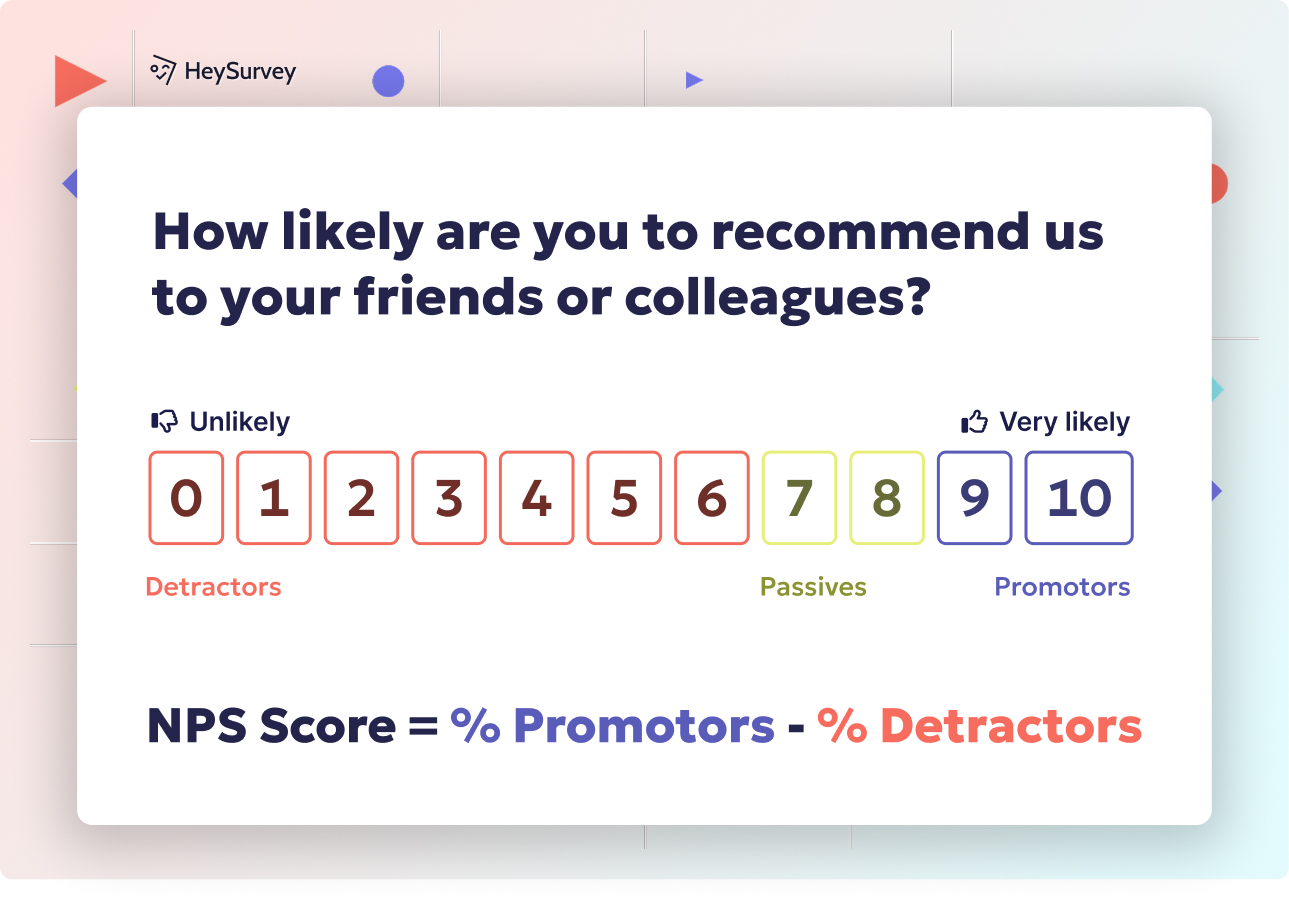
31 Content Marketing Survey Questions for Actionable Insights
Discover 25+ content marketing survey questions to gather actionable insights—boost audience alig...
